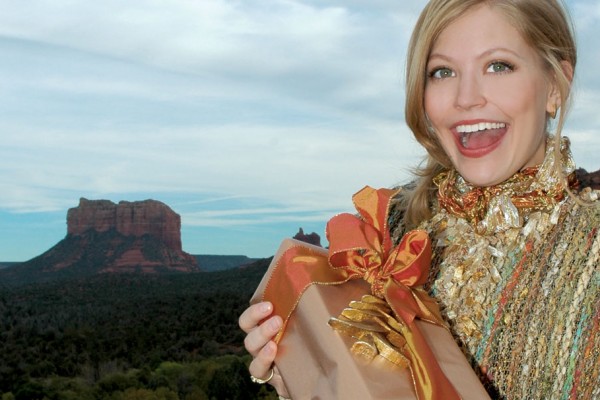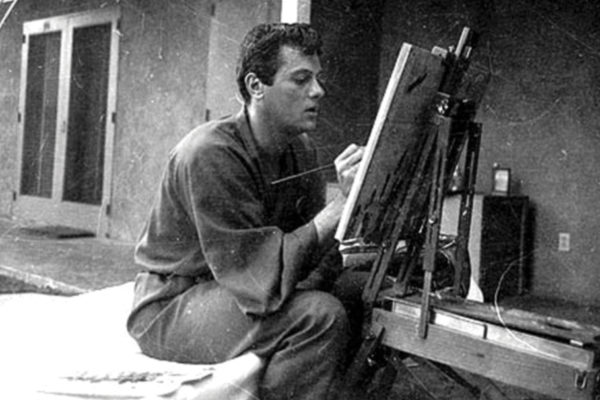Continued (page 3 of 4)
As eager as we were to explore our surroundings, we were quick to realize we needed to save as much strength as possible for the hike out, which could easily take us 10 hours. After breakfast, we slipped on our Teva sandals, thrilled to be out of our hiking boots for a while, and headed up to Phantom Ranch, about a half-mile north of the campground. The ranch is a series of rustic cabins, mule corrals, an amphitheater and the Cantina, which amounts to a small general store filled with tables and chairs for those staying at the ranch or the campground. (Phantom Ranch easily fills up a year in advance, so if you’d rather stay in a cabin than a tent, book early.) True to American culture, the Cantina sells souvenirs, snacks, coffee and even wine – it’s a small convenience store literally in the middle of nowhere. Backpackers can even purchase meals from the Cantina, which helps lighten your backpack considerably. It’s a great idea, and we’d originally intended to take advantage of it, only to discover that, like most aspects of the Grand Canyon, reservations are required months in advance, not a mere six weeks. Credit-card-only pay phones are available at Phantom Ranch, though be forewarned: A phone call to wish California parents a Happy Thanksgiving costs more than $15 for five minutes. There’s no cell service in the canyon.
We spent the rest of the day along the Colorado River, crossing both Kaibab (or Black) Bridge and Bright Angel (or Silver) Bridge under bright blue skies dotted with puffy cartoon clouds. Both suspension footbridges are quite impressive – Kaibab was completed in 1928 and is 439 feet long, while Bright Angel was completed in the late 1960s and measures 420 feet long. The sun warmed our aching muscles on Boat Beach, where we watched a group of rafters on a 19-day trip dock for lunch. It was about 65 degrees along the Colorado, which was a brilliant green-blue color, not the muddy brown we’d anticipated after so many days of rain upstream. Later, we enjoyed a lively ranger talk under an incredible sycamore tree at Phantom Ranch. As Friday wore on and our leg muscles became tighter and tighter, our worrying about the hike out became more and more intense. We noticed, with a bit of trepidation, that when we gazed up at the land high above us we were only viewing the top of the inner gorge – the canyon rim wasn’t even visible along the river.
Saturday morning arrived, and a slew of people began filing out of the campground. We packed up camp as quickly as possible, took a deep breath and headed in the direction of the 9.3-mile Bright Angel Trail that would (hopefully) safely deliver us back to the rim. The trail follows the Colorado for the first two miles and rises gently before turning south and following Garden Creek. Anyone who’s hiked into the Grand Canyon will tell you South Kaibab Trail provides the best canyon views (on a clear day, obviously), but I thought Bright Angel was one of the prettiest trails I’ve hiked. The views of the canyon were unique and the lush foliage a treat. The clear waters of Garden Creek tumble over rocks to form small waterfalls. After climbing the switchbacks of the Devil’s Corkscrew – not nearly as intimidating as it sounds and not even as steep as South Kaibab Trail – you’ll make your way through a beautiful canyon called Tapeats Narrows. At 4.7 miles, we reached the picturesque Indian Gardens, complete with campground, ranger station, restrooms, water and picnic tables.
We stopped for lunch and a brief rest. We were pleasantly surprised at the trail up until this point. The climb wasn’t anything worse than some of the steeper trails in Sedona, and the scenery was so beautiful we were distracted from our aches and pains. It had only taken three hours to come this far, and our confidence began to soar. The weather was even more beautiful than the day before, and we began to feel like we’d underestimated ourselves. After about an hour at Indian Gardens, we started back on the trail, noting the increase in day hikers (Indian Gardens makes for a popular day hike – anyone will tell you attempting to hike to the river and back in a single day is suicide) and feeling slightly envious of their small Camelbaks compared with our bulging backpacks. About a half-mile after Indian Gardens, the trail began to get steeper and steeper and the temperature colder and colder. We put on our iPods and beanies and pushed ourselves as the shadows grew longer. Rest houses are located three miles and 1.5 miles (restrooms at the latter not the former) from the top of the canyon – during the warmer months the houses offer water, but the water gets shut off in October to keep the pipes from freezing. The water is turned back on in April. It was at the three-mile rest house that we started to get tired, and the feeling only progressed the farther we climbed. The breaks also became more frequent, and we were diligent to eat something every hour to keep our energy levels up. We did catch sight of one of the park’s California condors, the largest land birds in North America, which gave us a boost. The closer we got to the end of the adventure, the chattier the day hikers became. When you’ve been hiking for eight miles with 30 pounds on your back, you’re not necessarily in the mood for small talk….



